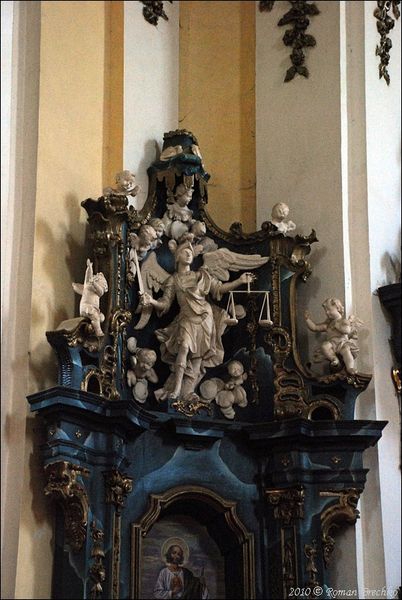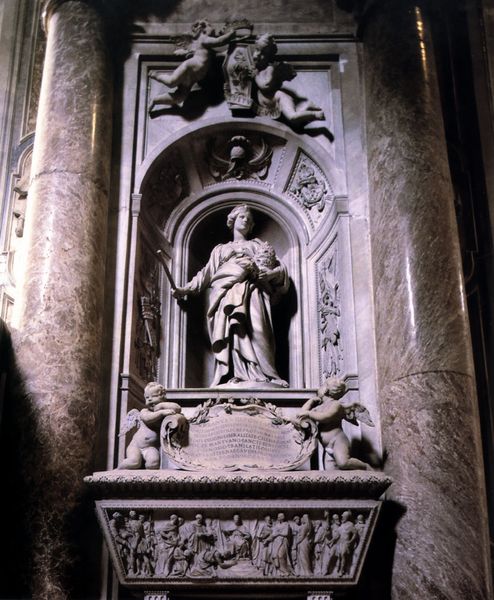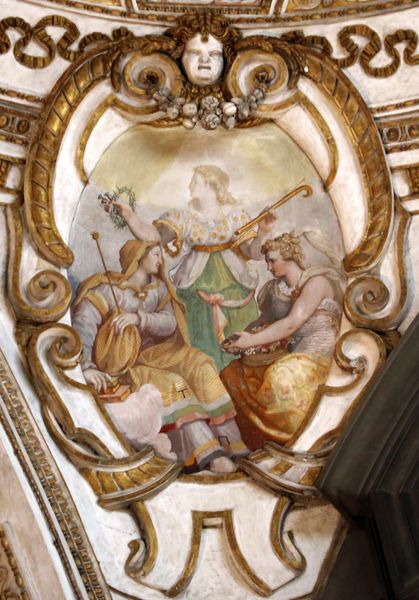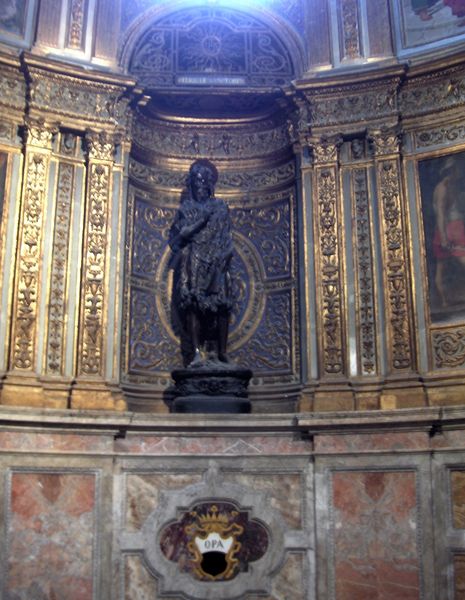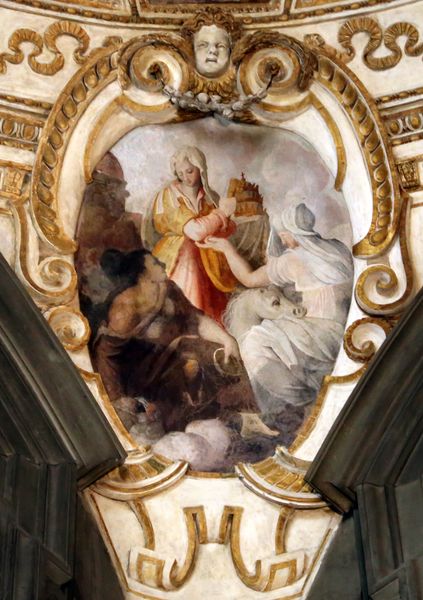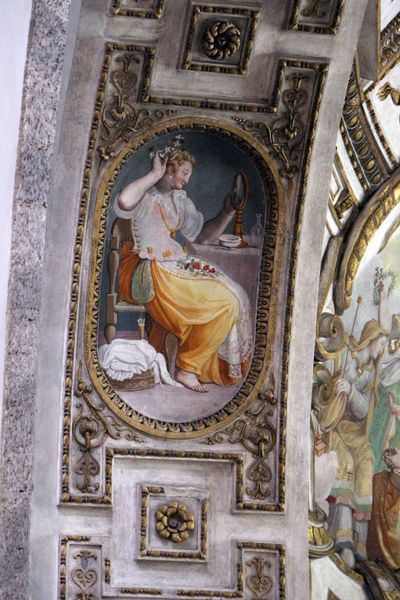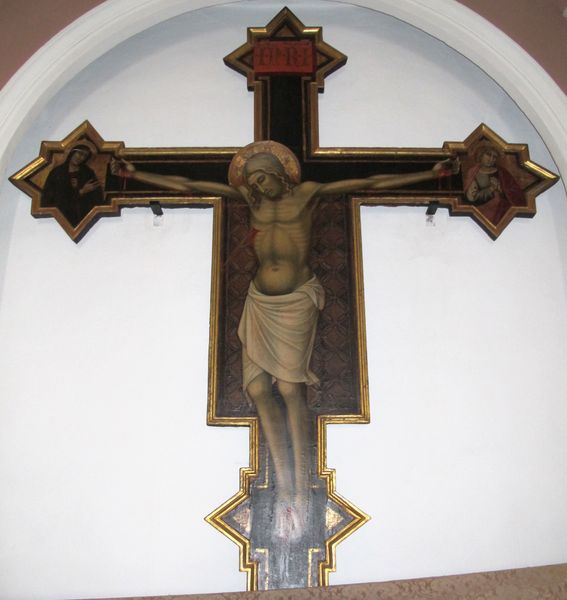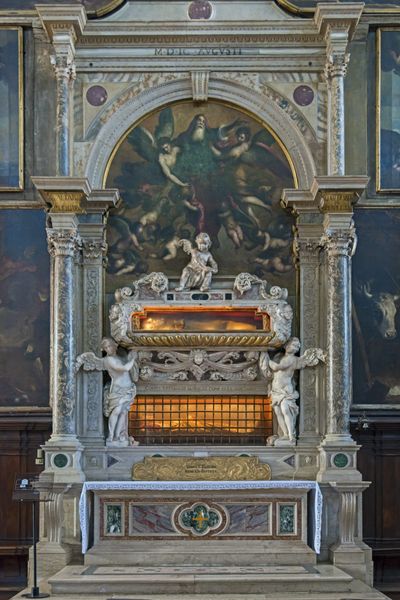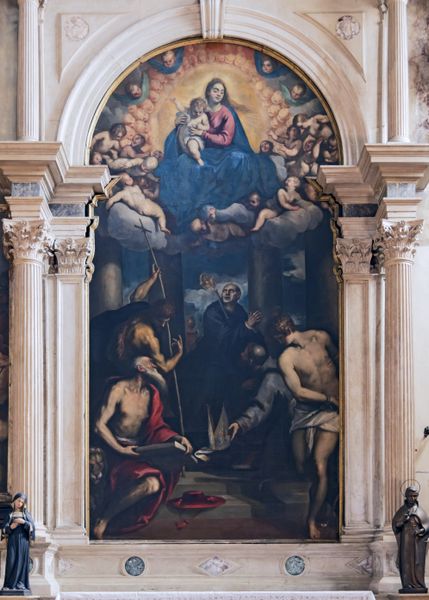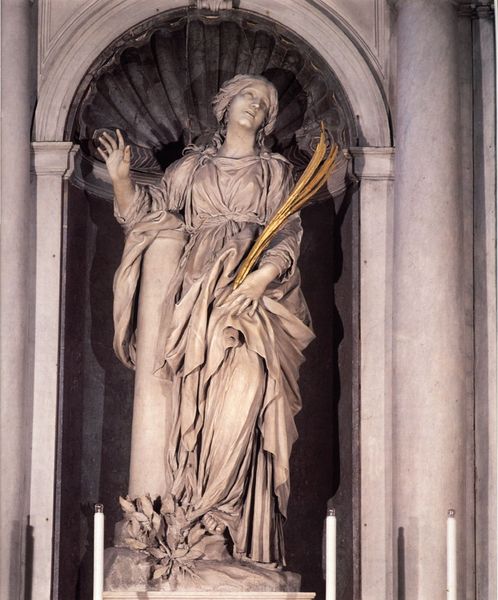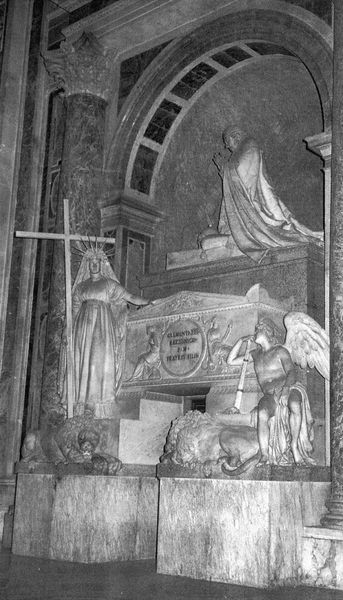
carving, ceramic, public-art, sculpture, wood
#
portrait
#
public art
#
statue
#
carving
#
baroque
#
sculpture
#
ceramic
#
public-art
#
figuration
#
historic architecture
#
traditional architecture
#
sculpture
#
wood
#
history-painting
Copyright: Public domain
Editor: So this is Johann Georg Pinzel's "Altar of St. Nicholas with a sculpture of Jan Nepomuk", created around 1755. The sculpture is baroque and, well, quite dramatic. There are a lot of figures crammed into this small space. What is your interpretation? Curator: Given its setting in a church, we have to consider its public role. This wasn't art for art's sake. Instead, consider how it operated within 18th-century religious life and its place as an icon of devotion and faith. Do you see how the artist has used the relatively new style of the baroque? Editor: I think so. The way the figures twist and turn creates movement and evokes emotion. But why so many figures clustered together? Curator: Think about the period, the context: post-reformation Central Europe. Patronage of the arts became another way for the Catholic Church to affirm its presence. Religious sculpture provided instruction and moral guidance and shaped the cultural landscape for believers. In addition, Catholic identity solidified publically during church services through objects of reverence and architectural designs to stimulate emotion and promote Catholic virtues. Baroque sculpture thus became another tool in its arsenal. Can you imagine its impact in the community? Editor: It definitely projects power and authority. Curator: Precisely. Now consider the symbolism within this historical framework. What stories might these saints be telling through their gestures, their placement, and the overall design of the altar? How do the individual figures act within the larger scheme of religious promotion? Editor: I hadn't considered the counter-reformation aspects so directly. This gives the work a more deliberate, and frankly, political context than I initially saw. Curator: Understanding its purpose allows us to grasp how this altar of Nicholas operated as a political as well as artistic and sacred symbol. Editor: It really highlights how art reflects societal powers and agendas of the church itself. I’ll think about religious sculpture much differently now.
Comments
No comments
Be the first to comment and join the conversation on the ultimate creative platform.
